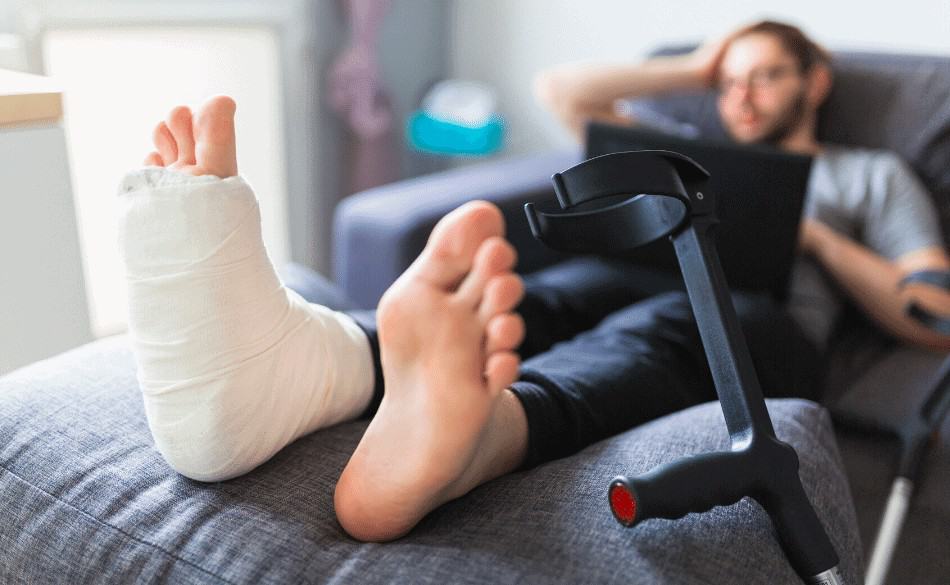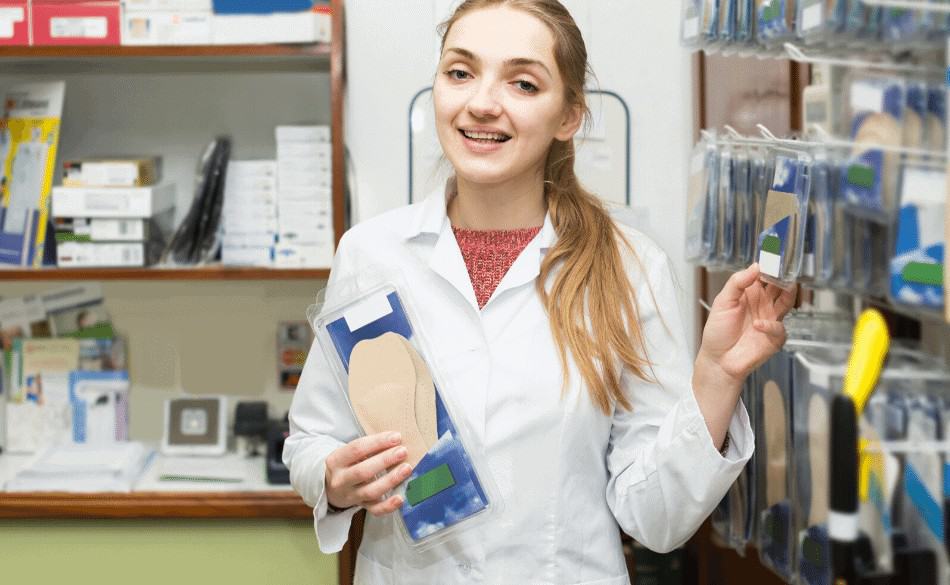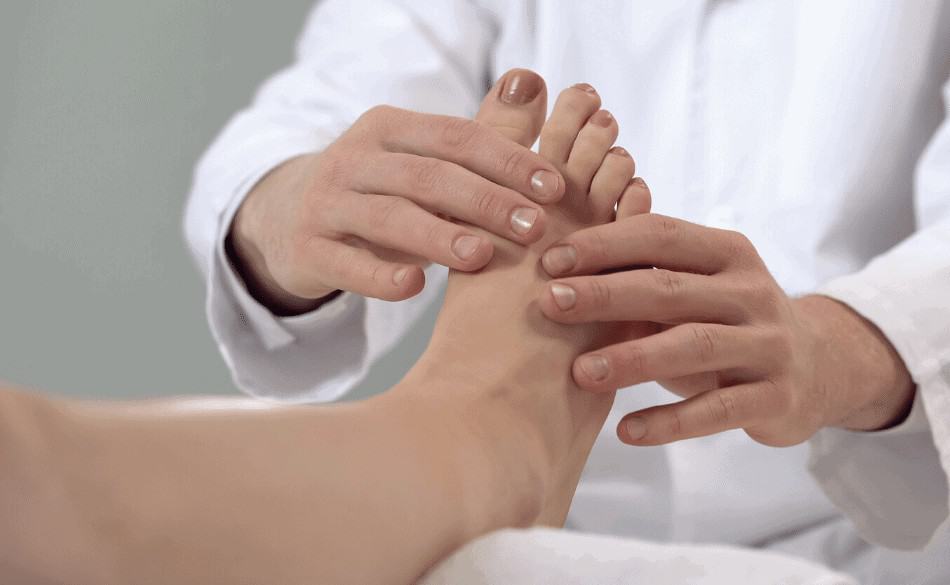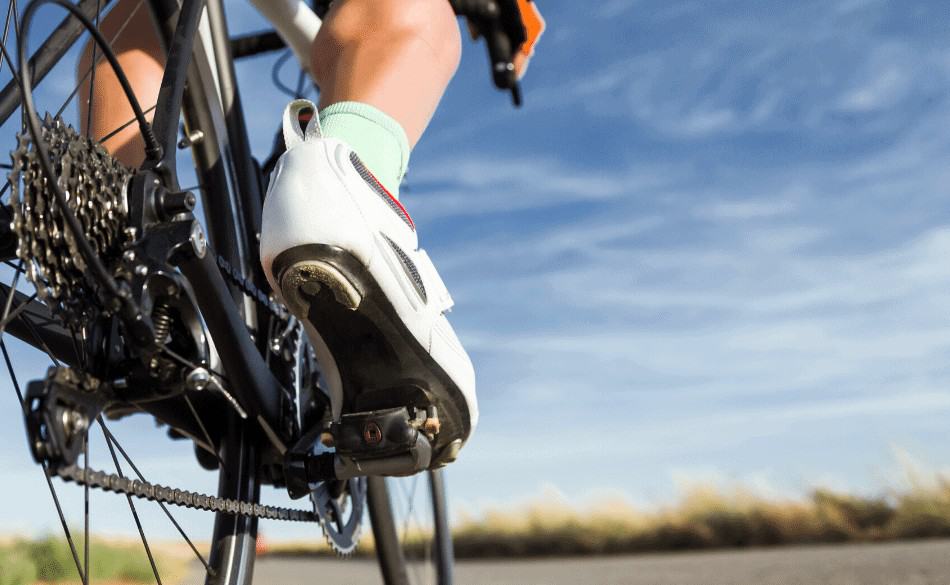
Cycling With A Broken Metatarsal – What You Should Know?
Page Contents
Cycling with a broken metatarsal is not a common injury for cyclists, though for runners it is often an injury we hear about. Runners often take to the bike in the hope to hold their fitness while they recover. The recovery period can be a long journey and runners often think cycling with a broken metatarsal be a good option during this time.
A broken Metatarsal or fracture is one of the most common injuries in the foot and has been prominent across several high profile runners over the years.
There are five metatarsal bones in each foot which are located between the ‘Tarsal’ (hindfoot) and ‘Phalanges’ bones in the toes. This means they play a vital role in propulsion, by acting as a rigid lever. They also provide a flexible structure that helps with balance, thus keeping us upright.
Cycling With A Metatarsal Stress Fracture
Because of this injury, many runners think cycling with a Metatarsal stress fracture can help aid recovery and prevent loss in form.
While this is somewhat true, it depends on the extent of the fracture and which of the five metatarsal bones are affected.
A Metatarsal stress fracture can be caused by direct trauma or overuse. In sports such as football, excessive rotational forces are also often a cause. But for runners, a metatarsal stress fracture is usually caused by repeated stress. This means the metatarsal bones become overloaded and fracture under the stress of impact.
For some runners though, faulty foot mechanics can play a role and often the cause of fracture to the 5th Metatarsal.
Since the recovery period is around 6-8 weeks for most cases. More serious fractures can take longer to heal. So knowing the diagnosis of the fracture and which of the five metatarsal bones will play a role in how quickly you are able to get on the bike. Returning to any load-bearing activity to early can put you at risk for a longer recovery period.
During the early stages of the stress fracture is wise to stay off the bike. The pressure of the cleats on your cycling shoes can lead to more irritation and limit the early recovery stages.
It is important if your cycling with a Metatarsal stress fracture, that you use stiff-soled cycling shoes. This helps to limit the movement of the foot, providing a solid platform that will help stabilize the Metatarsal.
Remember the seriousness of the fracture will depend on how quickly you can start cycling. The area where the fracture is located will depend on the recovery time and also the amount of load you will be able to place on it.
Metatarsal Pads For Cycling – How They Help?
If you have started implementing cycling into your recovery and running build-up, Metatarsal pads for cycling can be a great addition. Metatarsal pads support the foot by reducing pressure on the ball of the foot, helping to support the metatarsal bone in the process.
Often recommended by podiatrists rather than health care professionals. Metatarsal pads or custom made arch support can help to unload weight on the fracture site while cycling. This is important during the early stages of the fracture when small amounts of load a bearable
Metatarsal Stress Fracture Recovery
Metatarsal stress fracture recovery can take time, so it is important not to rush through the process and follow through with a recovery plan. Usually, recovery from a stress fracture goes through a series of phases.
During phase one of the fracture its important to limit unnecessary walking. For some people, a walking boot may be required. But during this time such things as swimming and upper weight training can be implemented. If your swimming during this period, remember to use a pool buoy to limit any kicking.
The second phase of your recovery starts to implement cycling. During this period it is important to progressively increase the load over the next few weeks. Then you can start to add variety into the cycling and this is where phase three starts. But remember it is important not to add too high load/resistance during this phase. This phase is about introducing some light load back onto the Metatarsal.
Phase three of your recovery should be adding more variety to the cycling. This means increasing the intensity and load more than phase two. You can also look at increasing the total duration each week to more than at phase two.
Phase 4 is where you can start to test the foot and continue with cycling or swimming. If you are testing the foot during this phase keep the runs short. This means introducing 4 x 500 jogs every 2-3 days.
By this time you are somewhat closer to recovery and can start slowly introducing running back into your plan. Remember though, take your time and don’t force the recovery. Otherwise, you will see yourself back at phase one.
Cycling With A Broken Metatarsal – Should You Continue?
You might be on your way to a full recovery from your Broken Metatarsal now but should you continue with the cycling?
For the runner, it’s a wise decision to continue cycling. Once you have been cleared to start running, you will need to focus on building up your mileage from scratch again. Cycling can help increase your endurance during this time while you build up the running volume. As long as you have fully recovered from your broken Metatarsal there is no reason why you can’t increase the cycling volume.
Introducing some low cadence workouts each week can help bring back strength and adding a long ride can help prepare you for your long runs once you are back to full fitness. Since its a proven fact that cycling can benefit you in the early stages of your running build-up its a good choice during this time.


Download Running the Mile for only 8usd
“A Know-all Short Report All About Long Distance Running”






